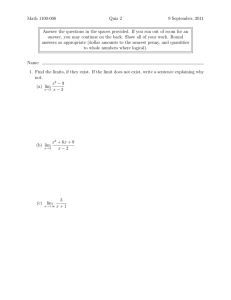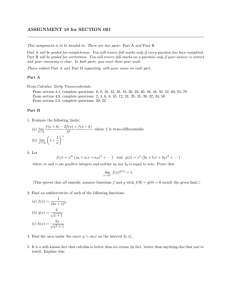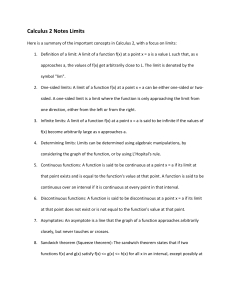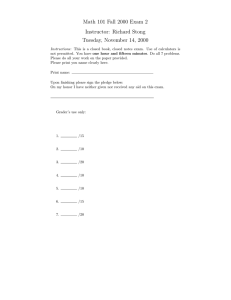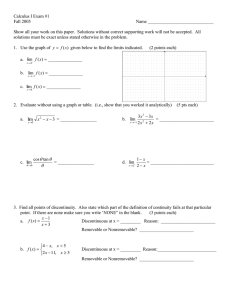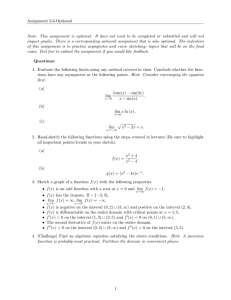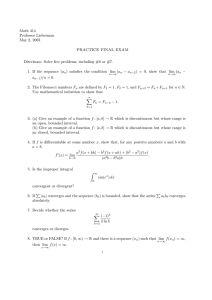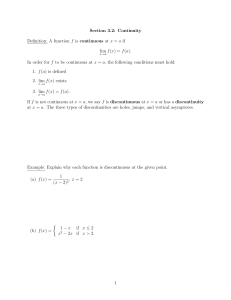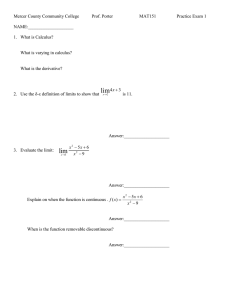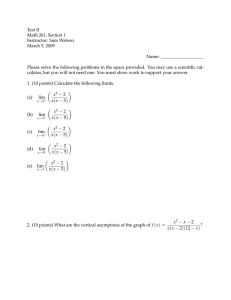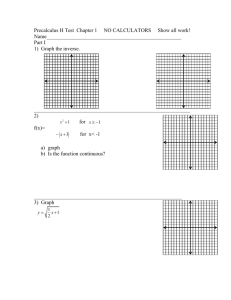AP Calculus AB – Chapter 1 Test
advertisement
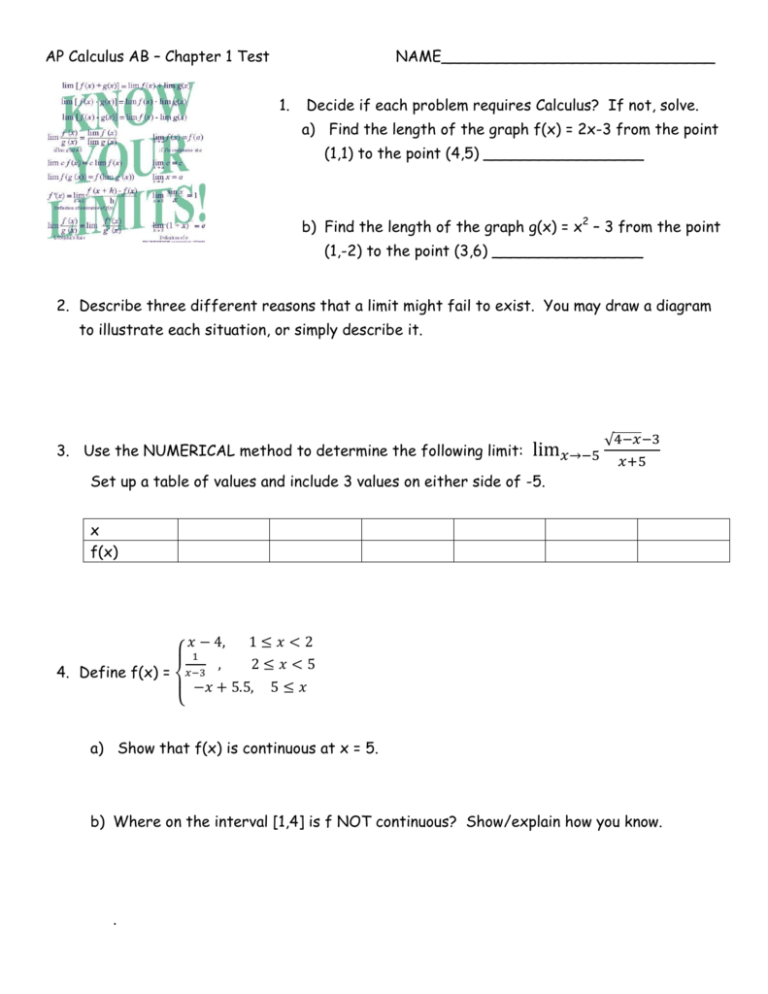
AP Calculus AB – Chapter 1 Test NAME_____________________________ 1. Decide if each problem requires Calculus? If not, solve. a) Find the length of the graph f(x) = 2x-3 from the point (1,1) to the point (4,5) _________________ b) Find the length of the graph g(x) = x2 – 3 from the point (1,-2) to the point (3,6) ________________ 2. Describe three different reasons that a limit might fail to exist. You may draw a diagram to illustrate each situation, or simply describe it. 3. Use the NUMERICAL method to determine the following limit: Set up a table of values and include 3 values on either side of -5. x f(x) 4. Define f(x) = a) Show that f(x) is continuous at x = 5. b) Where on the interval [1,4] is f NOT continuous? Show/explain how you know. . 5. Use the graph at the right to answer questions a) through d). 6 a) b) c) lim f(x) = x →2 lim f(x) = lim f(x) = x →4 x → 4- - f 4 2 -10 -5 5 10 -2 d) lim x →0 f(x) = -4 6. Find a c such that f(x) is continuous on the entire real line. x 2 when x 4 f(x) = c when x 4 x 7. Find the x-values (if any) at which f is discontinuous. Label as removable or nonremovable. f(x) = 2x 6 2x 2 18 8. True or False: If f is undefined at x = c, then the limit of f(x) as x approaches c does not exist. If false, provide a counterexample, such as a graph. 9. Verify that the Intermediate Value Theorem applies to f(x) = x2 + x – 1 on the interval [0,5], f(c) = 11. Find the value of c. 10. Find the vertical asymptotes of the graph of



